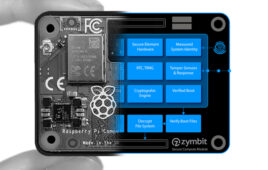While numerous efforts are underway to develop solar cell materials of the future, the hurdles have been photovoltaic efficiency and cost.
But a University of Toledo physicist has made significant progress in material chemistry and processing and may be close to achieving a breakthrough in solar cell performance. Working in collaboration with the U.S. Department of Energy’s National Renewable Energy Lab, Dr. Yanfa Yan, University of Toledo professor of physics, expects the material, called tandem perovskite, to be designed into full-sized solar panels in the not-too-distant future.
Yan envisions perovskites, compound materials with a special crystal structure, to provide a higher-performance alternative to silicon for future solar cells.
“We are producing higher-efficiency, lower-cost solar cells that show great promise to help solve the world energy crisis,” says Yan. “The meaningful work will help protect our planet for our children and future generations. We have a problem consuming most of the fossil energies right now, and our collaborative team is focused on refining our innovative way to clean up the mess.”
Yan’s research paper, published in the journal Science, explains how photovoltaics researchers are tweaking a lead and tin mix to improve the efficiency of the perovskite material in solar cells. So far, the scientists have achieved a maximum efficiency for the new solar cell of 23 percent. By comparison, existing silicon solar panels are about 18 percent efficient.
To improve the structural and optoelectronic properties of the mixed lead-tin perovskite films, the scientists used a chemical compound called guanidinium thiocyanate. The research builds upon work Yan’s team conducted at the University of Toledo five years ago, when the scientists identified the ideal properties of perovskites. Yan has spent 20 years trying to produce an all-perovskite tandem solar cell to harness the sun’s energy for electric power.
Last month, the U.S. Department of Energy gave Yan a $1.1 million grant to further his research in collaboration with the National Renewable Energy Lab.
“Our University of Toledo research is ongoing to make cheaper and more efficient solar cells that could rival and even outperform the prevailing silicon photovoltaic technology,” adds Dr. Zhaoning Song, research assistant professor in the University of Toledo Department of Physics and Astronomy and co-author on the study. “Our tandem solar cells with two layers of perovskites deliver high power conversion efficiency and have the potential to bring down production costs of solar panels, which is an important advance in photovoltaics.”
Yan’s team is doing further work to increase the material’s efficiency and stability, as well as ensure solar panels made from the material can be recycled to minimize harm to the environment.
Filed Under: Product design




